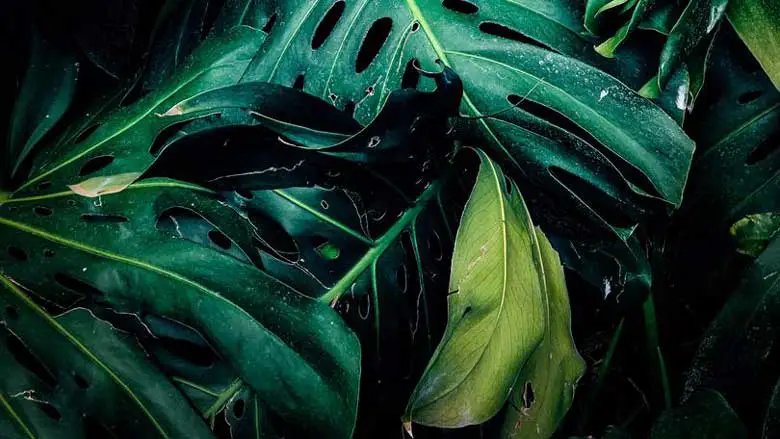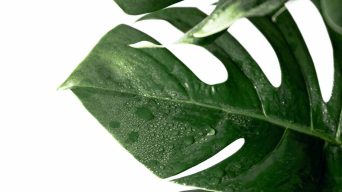Monstera leaves can turn yellow due to a variety of factors, such as overwatering, improper light exposure, temperature fluctuations, humidity levels, and fungal infections. The most common cause is overwatering, which damages the roots and affects oxygen absorption. Adjusting the watering schedule and providing appropriate lighting can help address this issue.
Monstera plants, including popular varieties like Monstera deliciosa and Monstera adansonii, are well-loved houseplants known as Swiss cheese plants that are easy to care for. However, without proper care, they can display signs of distress.
One common indicator of distress in Monstera plants is yellowing leaves—a prevalent issue faced by many houseplant owners.
Various factors, such as overwatering, underwatering, nutrient deficiency, or excessive sunlight, can lead to yellowing leaves.
The most effective way to resolve this issue is to identify the underlying cause and take appropriate steps to correct it.
By dedicating time to diagnosing the problem, you can often find a simple solution that will help your Monstera thrive once again.
This article will delve into the details of Monstera leaves turning yellow, discussing potential causes and providing solutions for this problem.
Reasons Monstera Leaves Turn Yellow (And How To Fix Them)
Monstera leaf yellowing is a common issue that can be quite frustrating.
Fortunately, understanding the potential causes can often lead to finding a solution to resolve the problem and help your plant thrive once more.
Here are some of the most common reasons why Monstera leaves may turn yellow and what you can do to fix the issue.
1. Overwatering
Frequent watering is often the cause of Monstera leaves turning yellow.
Monstera plants are native to tropical rainforests and require a significant amount of moisture to thrive.
Nonetheless, they need a soil that drains effectively to avoid saturating the roots, as excessive moisture can result in Monstera plants succumbing to root rot.
When plants are overwatered, the leaves will turn yellow as it tries to signal that it is not receiving enough oxygen.
Other symptoms of overwatering include brown or yellow leaves, wilting leaves, and mushy or rotten roots.
How To Fix It
If you think your Monstera is being overwatered, the best solution is to let the plant dry out completely before watering it again.
It is also essential to ensure the potting mix you use drains well and does not stay soggy for long periods.
To improve drainage, you can mix in some perlite or sand.
Additionally, it is important to only water Monsteras when the top inch of soil is dry.
You can check the moisture level by sticking your finger into the soil. If it is dry, it is time to water the plant.
2. Underwatering
Monsteras are native to the tropics and prefer high humidity and consistent moisture.
The soil should be evenly moist but not soggy. If the foliage starts to turn yellow, it indicates that the plant needs more water.
These plants require regular watering, especially during the growing season (spring and summer). During these months, they should be watered every one to two weeks.
Watering frequency can be reduced to once a month or less in the fall and winter.
When underwatering occurs, plants may exhibit signs such as curled leaves, indicating dehydration. The plant curls its leaves to reduce surface area and prevent further moisture loss during the fall and winter months.
Other symptoms of underwatering include wilting leaves, dry or crispy leaves, and overall poor plant health.
How To Fix It
Increasing watering frequency is best if your plant needs more water.
Water Monsteras when the top inch of soil is dry.
In the spring and summer, Monsteras should be watered every one to two weeks.
You can reduce watering to once a month or less in the fall and winter.
Additionally, increase the humidity around the plant by misting it with water or placing it on a pebble tray.
3. Nutrient Deficiency
Monstera’s leaves typically turn yellow when the plant is not receiving enough nutrients.
Monstera plants are native to tropical rainforests and require ample nutrients to thrive.
In their natural habitat, Monsteras obtain these essential nutrients from decaying leaves and other organic matter that accumulates on the forest floor.
However, when plants are grown in pots, they can quickly deplete the nutrients in the soil. This is especially true if the potting mix is not of high quality or if the plant is not adequately fertilized.
The plant’s leaves may start to curl up at the edges, indicating a nutrient deficiency. Additionally, the yellowing of the leaves may become more pronounced, further indicating the plant’s distress.
How To Fix It
If you’re experiencing a lack of nutrients in your Monstera plants, there are several ways to address this issue.
One approach is to increase the amount of fertilizer you use, ensure the soil is well-draining and not compacted, and supplement with micronutrients if necessary.
Fertilizing the plant with a high-quality, balanced fertilizer specifically designed for tropical plants rich in nitrogen will promote healthy growth and development of the Monstera. Nitrogen is an essential nutrient that aids in the formation of proteins and chlorophyll.
Fertilize your Monsteras every two weeks during the growing season (spring and summer), but halt fertilization in the fall and winter.
It’s crucial to ensure that the potting mix is of high quality and contains ample organic matter. Incorporate organic matter into the potting mix by adding compost or vermiculite.
Additionally, make sure to repot your Monsteras every one to two years to provide them with a fresh potting mix abundant in nutrients.
4. Excessive Sunlight
Numerous triggers can be responsible for Monstera foliage turning yellow. However, exposure to intense light is usually the perpetrator.
Monsteras are tropical plants that thrive in humid, shaded environments and need bright indirect sunlight.
When exposed to too much direct sunlight, the leaves can become scorched, causing the chlorophyll to break down, and the leaves will show a yellow color.
Other symptoms of too much direct sunlight include the development of brown spots on the foliage, the leaf edges may become brown or crispy, and the leaves may curl or become brittle.
How To Fix It
If you believe your Monstera is receiving too much direct sunlight, relocate it to a more shady location.
When grown indoors, Monsteras should be kept near an east- or west-facing window where they will get bright indirect light from the morning sun.
If you can’t move the plant to a shadier location, you can also try filtering the sunlight with a sheer curtain or blind.
When grown outdoors, Monsteras should be kept in a location that offers dappled sunlight or filtered shade.
5. Temperature Stress
Monsteras are tropical plants that prefer warm, humid environments.
They do not tolerate cold temperatures well and can be damaged by frost.
Extreme heat can also harm Monsteras and cause the yellowing of the leaves.
If the temperature around your Monstera fluctuates frequently, this can also lead to leaf discoloration.
To prevent temperature stress, keep your plant in a consistent environment with temperatures between 65-85 degrees Fahrenheit.
Avoid placing the plant near drafty windows, air vents, or doors.
How To Fix It
When your Monstera is experiencing temperature stress, moving it to a more consistent location is best.
Try to keep your plants in an environment with temperatures between 65-85 degrees Fahrenheit.
If your Monstera is outside, ensure it is protected from frost by bringing it indoors or covering it with a frost blanket.
Avoid placing them near drafty windows, air vents, or doors when indoors. Place the plant where it will receive indirect sunlight and the temperature is consistent.
6. Low Humidity
Monsteras thrive in humid environments, and their leaves will often turn yellow if the humidity levels are low.
There are several reasons why this may occur.
First, low humidity can cause the leaves to dry out and become brittle. This can cause them to turn yellow and eventually fall off the plant.
Second, low humidity can also cause the plant to lose its ability to absorb nutrients from the soil. This can lead to malnutrition, which can cause a variety of issues for the plant.
Finally, low humidity can promote the growth of fungal diseases, which can also cause plant leaves to turn yellow.
How To Fix It
The best way to fix this problem is to increase the humidity around your Monstera plant.
You can do this by misting the plant with water; this will help maintain a consistent moisture level in the air.
Another way to increase humidity is by placing your plant on a pebble tray. This is a tray filled with gravel or rocks and water. The water will evaporate and raise the humidity around the plant.
7. Overfertilizing
Monstera plants are native to tropical rainforests, growing rapidly and reaching immense sizes.
As a result, they have evolved to absorb large amounts of nutrients from their environment.
When plants are grown as houseplants, they often do not have access to the same level of nutrients, so gardeners must supplement their diet with fertilizer.
However, it is essential not to overdo it, as this can lead to curling and yellow leaves.
When Monstera plants are fertilized too frequently or with too much fertilizer, the excess nutrients can build up in the soil and cause the leaves to turn yellow.
It can also cause the leaves to become burnt or distorted.
Other symptoms that can help you identify this issue include brown or yellow spots on the leaves and new stunted or deformed growth.
How To Fix It
If you think your Monstera is being overfed, the best solution is to flush the soil with water. This will help remove any excess nutrients from the soil and prevent them from damaging the plant.
Additionally, it is essential only to fertilize Monsteras when they are actively growing, typically in the spring and summer.
Do not fertilize Monsteras when dormant, as this can damage the roots.
8. Soil Issues
Monsteras are native to tropical regions and prefer well-drained, humus-rich soil.
However, when grown as houseplants, they are often grown in a potting mix that does not drain well or is too dense. This can lead to several problems, including root rot, resulting in yellowing Monstera leaves.
When the soil does not drain well, the roots cannot access the oxygen they need to survive, which can also cause Monsteras leaves to turn yellow.
You can tell if your plant suffers from soil issues, if the leaves are wilting, or if the stem is soft and mushy.
Other symptoms include yellowing leaves, brown or black spots on the leaves, and stunted growth.
How To Fix It
The best way to fix this issue is to repot your Monstera into a fresh, well-draining potting mix that holds moisture but still drains well.
Monsteras prefer a potting soil mix that is light and airy, such as peat moss and perlite.
Additionally, it is essential to choose a pot with drainage holes, as this will help prevent the roots from becoming waterlogged.
Plants should be repotted every two to three years to keep soil from compacting. This will also help refresh the potting mix and provide the plant with new nutrients.
9. Repotting Shock
Monsteras are notoriously tricky to repot, and the process can often damage the roots.
This root damage can lead to a water shortage and nutrients, causing leaf yellowing.
Additionally, when Monsteras are repotted, they are often moved to a pot that is too large.
The extra space in the pot can cause the roots to dry out quickly, leading to the Monstera turning yellow.
You can tell if your plant suffers from repotting shock if the leaves are wilting and turning yellow, especially the oldest leaves.
Other common symptoms include stunted growth, brown leaves, and leaf drop.
How To Fix It
If your Monstera plant is suffering from repotting shock, the best thing you can do is wait.
Monsteras are very resilient plants and will often bounce back from repotting damage given time.
You can also help your plant recover by providing extra water and humidity.
Monsteras prefer high humidity, so placing the pot on a pebble tray can help to increase the moisture in the air around the plant.
10. Pest Infestation
Monstera leaves often turn yellow due to a prevalent issue of pest infestations.
Aphids, spider mites, and mealybugs are common pests that can infest Monstera plants and cause the leaves to turn yellow.
Pests suck the sap from the plant, causing the leaves to turn yellow and eventually die.
Pest infestations can also spread disease, so dealing with them as soon as possible is essential.
You can tell if your plant has a pest infestation if you see small insects or webs on the leaves or stems.
Other common signs of pest infestation include leaf discoloration, stunted growth, and leaf drop.
How To Fix It
Treating your Monstera plant with insecticidal soap or neem oil is the best way to eliminate pests.
These products are safe for Monsteras and will kill the most common pests.
Also, regularly check your plant for pests and remove any you find by hand.
Additionally, you can help prevent pests by regularly cleaning your plant and keeping the area around it free of debris.
11. Diseases
Leaves turning yellow is a common problem caused by several diseases, including anthracnose, fungal leaf spots, and powdery mildew.
These diseases are fungi that cause the leaves to turn yellow by damaging the chlorophyll in the leaves.
Chlorophyll is responsible for photosynthesis, which is how plants make food from sunlight.
When the chlorophyll is damaged, the plant can no longer make food, and the leaves turn yellow and eventually die.
You can tell if your plant has a disease if you see yellow spots on the leaves or stems.
Other common symptoms include stunted growth, leaf drop, and brown lesions on the leaves.
How To Fix It
If your Monstera has a disease, the best thing you can do is treat it with a fungicide.
There are many fungicides available, so choose one safe for Monsteras.
Also, remove any affected leaves from the plant to prevent the disease from spreading.
Lastly, you can help prevent diseases by regularly cleaning your plant and keeping the area around it free of debris.
12. Adjusting to a New Environment
Monstera plants are known for their ability to adapt to various environments.
However, this adaptability can also cause the leaves to turn yellow.
When a plant is moved to a new location, it undergoes a period of adjustment as it acclimates to the new conditions.
During this time, the plant may experience stress, which can cause the leaves to turn yellow.
In most cases, the plant will eventually recover from the stress, and the leaves will return to their normal color.
However, if the stress is too great, the plant may die.
Therefore, it is essential to be careful when moving your plants and give them time to adjust to their new environment.
How To Fix It
If your Monstera plant is experiencing stress from a new environment, the best thing you can do is to give it time to acclimate.
Avoid moving the plant again until it has had a chance to adjust to its new surroundings.
Additionally, you can help your plant acclimate to its new environment by providing it with the proper care.
Give it the right amount of light, water, and fertilizer, and avoid exposing it to drafts or extreme temperatures.
13. Natural Causes
Monstera leaves turning yellow can also be caused by natural causes, such as old age or the seasons.
Monstera leaves are known to turn yellow when they age and start to die.
This is a normal part of the plant’s life cycle and is nothing to worry about.
Monsteras also tend to shed their leaves during the winter months.
The plant goes dormant during the winter and doesn’t need as many leaves to produce food.
As a result, the plant will shed its leaves to conserve energy.
How To Fix It
If your Monstera plant is experiencing yellowing leaves due to old age or the seasons, there is nothing you can do to fix it.
The plant will eventually shed its leaves and grow new ones.
By comprehending the inherent reasons for leaf yellowing, you can rest assured that it is a normal occurrence and indicates the well-being of your Monstera plant.
Can Yellow Monstera Leaves Turn Green Again?
Once Monstera leaves turn yellow, they will not turn green again. This is because the chlorophyll in the leaves is damaged and cannot be repaired.
However, new leaves that grow on the plant will be green.
So, if your Swiss cheese plant is losing its leaves, don’t worry! The plant will grow new, green leaves to replace them.
Should I Cut Yellow Leaves off Monstera?
It is not necessary to cut yellow Monstera leaves off the plant.
It is better to leave them on the plant so that the plant can absorb nutrients from them.
You should only consider cutting the yellow leaves off the plant if they change color due to overwatering, pests, or fungal infection.
In these cases, it is best to remove the affected leaves so that the rest of the plant stays healthy and prevents diseases from spreading.
Also, if the leaves are damaged, you should cut them off so the plant can focus its energy on growing new, healthy leaves.
Final Thoughts
Indoor gardeners adore the stylish appearance of the large, perforated leaves of this popular houseplant.
It requires minimal care and is perfect for those seeking to add a touch of greenery to their indoor space.
However, Monstera leaves can sometimes turn yellow, indicating that the plant is not receiving proper care.
The most common reasons for yellowing leaves include overwatering, underwatering, pests, disease, stress, and natural causes.
In most cases, you can save the plant by taking appropriate action.
By understanding why Monstera leaves turn yellow, you can provide your plant with the care it needs to stay healthy and green.







